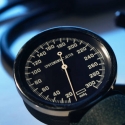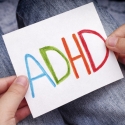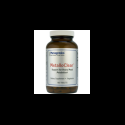The word chelation is derived from the Greek word, chele, which means claw (like that of a scorpion or crab). The concept of chelation is base of the observation that when a certain amino acid complex called EDTA (ethylene-diamine-tetra-acetic acid) comes in contact with certain positively charged metals and other substances such as lead, copper, calcium, magnesium, cadmium, mercury or manganese it binds or grabs them (hence the chele or claw), and removes them. Chelation therapy if the process of removing from the body the undesirable ionic material by the infusion. Chelation may be performed with various oral and intravenous solutions, although we find the intravenous administration of EDTA is typically the safest and best route to use.
EDTA is a synthetic amino acid first used in the 1940’s for treatment of heavy metal poisoning. It is widely recognized as effective for that use as well as certain others, including the emergency treatment of hypercalcemia and the control of ventricular arrhythmias associated with digitalis toxicity. Studies by the National Academy of Science/National Research Council in the late 1960’s indicated that EDTA was considered possibly effective in the treatment of occlusive vascular disorders caused by arteriosclerosis. EDTA grabs metallic cations such as lead or calcium from the body and forms a stable compound that may be excreted through the urine. The stability of this bond is vital to success in chelation therapy. If the bond is weak, other chemicals can break this bond to form their own compounds.
One way to think about chelation if to compare it to the way we unclog our drains. We add a chemical to our drain. It dissolves the blockage. The resulting compound is removed from the drain using the existing plumbing system. Chelation processes works in a similar manner in our body.
The process of chelation is very common in nature. Our human digestive process is a good example of how chelation takes place. Digestion and assimilation of foods involves the chelation of protein substances (amino acids) with minerals for transportation to their destinations, or in which blood cells latch on to, and thus acquire, iron. Hemoglobin is a chelate of iron. When you eat meat or green vegetables which contain iron, after the digestive process has released the iron from the food in which it is bound, it has to be combined (chelated) with amino acids so that it can be carried through the intestinal mucous membranes into the bloodstream.
If you drink tea with your meal, the tannin in the tea will chelate with the iron (forming insoluble iron tannate) before it gets absorbed. In this case, the body does not get any iron from your food. On the other hand, if we take some foods which are rich in vitamin C (or take vitamin C supplements) with our iron rich food meal, the ascorbic acid (vitamin C) will chelate with the iron and enhance its absorption. The iron, once in the bloodstream, is released from the proteins with which it was chelated for transportation.
How is Chelation Therapy Administered?
Once it has been established that there is a problem which could benefit from EDTA infusion, a series of treatments are scheduled, typically one to three times a week. Chelation therapy may occur in a group setting with other patients receiving similar treatment.
The infusion involves a needle being inserted into a vein (usually in the hand or forearm). The needle is attached to the infusion bottle containing the EDTA and various other nutrients. The infusion bottle is hung from an adjustable stand and allowed to infusion over 2 and ½ to 3 hours. The precise amount of time for the administration will be determined by your provider (increased time may be required for impaired renal function patients). A typical chelation infusion will contain 3 grams of EDTA and additional vitamins, minerals and supplements felt to be appropriate for your medical condition. The amount of EDTA may vary if you have some degree of renal impairment.
In most cases, EDTA solution is dripped into the bloodstream at a rate of one drop per second. One to three infusions may be given each week. The complete treatment consists of anything from 20 (for relatively mild problems) to 30 infusion. In rare cases a longer number of infusions may be recommended. Typically periodic maintenance infusions will need to be continued to ensure ongoing benefits.
Periodic blood and urine testing will be done to make sure that the kidneys and other organs are operating sufficiently well to cope with the EDTA detoxification. The EDTA is 95 percent eliminated from the body by the kidneys and 5 percent via bile excretion.
Benefits of Chelation Therapy
Reduces Free Radical Activity in the Blood
We can think of our cells in the body as miniature factories. Inside the cell, the digestive process is going on. That means converting the raw materials into energy and protein compounds. Like in a factory, there are mechanisms to transport material within the cell as well as mechanisms to transport material to and from the cell. In our body, these mechanisms are performed by complex enzyme activity.
The cell membrane, or cell wall, that surrounds each cell controls what goes in and out of the cell. The active cell membrane is made up of lipids (cholesterol), protein and water.
Free radicals are the highly unstable chemicals that attack, infiltrate and injure vital cell structures. Most stable chemical compounds in the body possess a pair of electron. Sometime, one member of the electron pair gets stripped away. The resulting compound (that is short of one electron) is called a free radical.
The key to having a healthy body is to repair the damages caused by free radicals before it is too late and to protect the body’s tissue cells from the free radicals before they can cause mutations. Antioxidants are substances that have free-radical chain reaction breaking properties. Antioxidants deactivate potentially dangerous free radicals before they can damage a cell’s machinery. Most of these antioxidants come from plants and are called phytochemicals. More than 60,000 of such plant chemicals are identified. Among the most effective and dedicated antioxidants are vitamin A, C and E. Out of these, vitamin C in the most powerful.
Each cell produces its own antioxidants. The ability to produce them decreases as we age. This is why our diet should supply antioxidants, phytochemicals (fruits and vegetables are a good source for these) and additional vitamins and minerals.
Free radicals can cause lipid peroxidation (fat becomes rancid). This causes chaos within the cell and the cell will not function properly. Raw materials needed for normal metabolism cannot get into the cell and waste products (by products of metabolism) cannot get out of the cell. This is the beginning on cell degeneration.
This is what happens when atherosclerosis begins in an artery well. The majority of lipid peroxidation activity involves the presence of metal ions such as iron, copper or calcium. EDTA effectively locks onto these ions, preventing their destructive action. Chelation therapy may reduce the production of free radicals by up to a million-fold!
Research over the past 30 years has confirmed the benefits of EDTA. This protective influence of EDTA would be enhanced by an appreciable presence of antioxidant nutrients such as vitamins A, C and E, selenium and amino acid complexes such as glutathione. These not only mop up free radicals but also assist in reinforcing the stability of the cell membrane.
Blocks Calcium Absorption, Repairs Damages Muscles, Improves Cell Energy Production
Calcium may pass through the damaged cell wall into the cells. If calcium gets deposited in the arterial walls, it inhibits the enzyme activity which, in turn, affects the production of energy, the movement of raw materials, finished products and waste products from the cell. The cells become energy starved and become acidic (lower intracellular pH) as a result. This can lead to premature aging, unbalanced calcium/magnesium ratios, increase free radical activity, local toxicity, oxygen deficit, nutritional imbalances, etc.
The cells that have become energy starved and acidic start to attract calcium ions, drawing them into the cells. This further blocks energy production. The result is degenerative cardiovascular conditions. When this happens, the muscles inside the artery walls go into spasm. Often this condition is treated with medications called “calcium channel blockers.” The problem is that calcium channel blockers block the calcium intake by the muscles; but it does nothing to cure the underlying problems of cell damage.
This process gets really out of hand in the presence of additional vitamin D and cholesterol. Free radicals help to convert the cholesterol into substances with vitamin D activity. This produces plaque, which in turn, attracts calcium cementing the material.
EDTA removes the toxic metal ions such as lead, calcium, mercury, copper, iron and aluminum from the bloodstream. These are necessary for the production of free radicals. By removing the extra calcium from the bloodstream, there is not more free calcium available to produce plaque. This allows the cells to start to repair themselves. Their production of energy increases. As more and more cells rebuild their production of energy increases. As more and more cells rebuilds, our body becomes healthier. The cells are more resistant to injury. The result is that we have started a salvage and regeneration activity that repairs previously damaged arterial walls and heart muscle. Overall, the entire body benefits as a result of chelation.
Cancer Treatment
Free radicals play an important role in the genesis of cancer. By removing the metallic anions from the bloodstream, EDTA helps the cells to remain healthy and help the damaged cells to heal. Research has shown a decrease in the incidence of death by cancer after EDTA treatment. We don’t know the exact mechanism of action. In some forms of cancer, the use of EDTA was found to strip the tumor cells of their protective coat, allowing other mechanisms (such as protein digesting enzymes) to destroy the tumor.
Mental Health
Researchers have noticed that patients who have undergone chelation treatment are less depressed. They are more alert and had better concentration and memory.
Chelation physicians attribute this improvement in mental health to an improvement in the overall cellular nutrition as a result of better circulation resultant from the chelation treatments. Another possibility is that by removing the harmful toxins from the bloodstream, the brain and central nervous system are protected from harmful effects of these toxins. This improved the overall functioning of the brain and translates into better memory and mental conditions.
How is Chelation Therapy Administered?
Medical Examination
Prior to administration of an EDTA infusion, a Wycoff Wellness Center provider will conduct the appropriate tests to determine whether the patient has a condition that will benefit from the therapy and this is an appropriate treatment.
A comprehensive personal and family history is taken with special emphasis on all aspects of previous health problems and current status. Patients will be asked questions regarding diet, habits, emotional status, exercise, stress levels and a detailed list of symptoms. A full physical examination will also be performed with special emphasis on the circulatory and respiratory systems.
This is followed by a series of medical tests such as an electrocardiogram (ECG), chest x-ray, blood tests, urine tests, diet and possibly a hair analysis. An exercise stress test may be required to determine how the heart, lungs and circulation responds to activity. A Doppler (ultrasound wave) examination may be needed to establish a ‘before’ picture of the circulatory system.
EDTA Treatments
Once it has been established that there is a problem which could benefit from EDTA infusions, a series of treatments are scheduled, usually two to three time per week. Often times your treatment will be in a room with other patients receiving treatments.
The infusion involves a needle being inserted into a vein (usually in the hand or forearm). The needle is attached to the infusion bottle containing the EDTA and various other nutrients. The infusion bottle is hung from an adjustable stand and allowed to infusion over 2 and ½ to 3 hours. The precise amount of time for the administration will be determined by your provider (increased time may be required for impaired renal function patients). A typical chelation infusion will contain 3 grams of EDTA and additional vitamins, minerals and supplements felt to be appropriate for your medical condition. The amount of EDTA may vary if you have some degree of renal impairment.
In most cases, EDTA solution is dripped into the bloodstream at a rate of one drop per second. One to three infusions may be given each week. The complete treatment consists of anything from 20 (for relatively mild problems) to 30 infusions. In rare cases a longer number of infusions may be recommended. Typically periodic maintenance infusions will need to be continued to ensure ongoing benefits.
Periodic blood and urine testing will be done to make sure that the kidneys and other organs are operating sufficiently well to cope with the EDTA detoxification. The EDTA is 95 percent eliminated from the body by the kidneys and 5 percent via bile excretion.
Side Effects of Chelation Therapy
Side effects are possible and have been reported with chelation therapy. Most commonly these side effects are related to depletion of needed minerals in your body from the chelating agent. Often, these side effects can be reduced by taking a quality vitamin/mineral supplement daily. Please check with our office and we will be happy to recommend the appropriate supplements for you.
The most common side effects reported include:
- Headaches – this is generally related to a low blood sugar level. To prevent this from happening, eat before or during each treatment. A common recommendation for the prevention of the ‘EDTA-headache’ is to eat a banana during the first hour of the infusion.
- Local skin irritation – this is generally due to a deficiency of zinc and vitamin B6. Supplementations of these nutrients are recommended during the therapy.
- Nausea or stomach upset – generally due to a deficiency of vitamin B6. It is manifested in less than 1 percent of the patients receiving chelation therapy. It is best treated by B6 supplementation.
- Diarrhea – very few patients experience this problem. Be sure you are adequately hydrated before and during your infusions. Avoid spicy foods or any foods that may upset your stomach or intestines before each infusion. Frequency of urination often increases after each infusion due to the increased volume of fluid administered and the chelating agent. A weight loss of 3 to 5 pounds is common after an infusion especially if the patient has fluid retention before the treatment.
- Feeling a little faint or lightheaded – this is generally due to a drop in blood pressure. It is common for those who had high blood pressure that returns to more normal values as a result of the treatments. If your blood pressure was normal to start, it could drop slightly after the infusion. This may lead to a feeling of faintness or being light headed after standing especially after lying or sitting. If this happens, rest for an hour or so, keep your feet higher than your head and increase your fluid (water) intake. If blood pressure drops continue, take a supplement containing the amino acid tyrosine to help restore normal blood pressure levels.
- Extreme fatigue – this is usually from a general nutrient deficiency of minerals such as magnesium, zinc or potassium. Taking a potassium rich supplements and/or the regular eating of potassium rich foods before and during chelation treatments (grapes, bananas, peaches, potato skins) may be helpful.
- Fever – very few people (less than 0.02 percent of those undergoing the treatment) may develop fever during the day after chelation therapy. If this happens to you, please notify your chelation therapist. This condition normally resolves on it own.
- Cramps – about 5 percent of the patients report cramps usually at night. It is treated best by administering supplemental magnesium either orally or as an additive to the EDTA infusion mixture. If magnesium is added to the infusion, it is generally in the form of magnesium chloride. Such additions also reduce the chance of local skin irritation at the site of the infusion.
- Pain in the joints – this is generally reported by patients who receive frequent (three per week) infusions. It this happens, we will reduce the number of infusions to one per week. If you develop other flu like symptoms, we will also reduce the frequency of the infusions. If you are unsure of what symptoms you are experiencing, please contact any staff member of the Wycoff Wellness Center.
Remember, it is important to take a daily vitamin/mineral supplement while receiving chelation therapy. We recommend that you do not take your supplements today of your chelation infusion, but they should be taken daily on all other days.
Safety Concerns
Kidney Toxicity
In the early 1950’s several deaths occurred from kidney toxicity after EDTA treatment. At that time the dosage used was around 10 grams per infusion. The recommended dose is now 3 grams.
Kidney toxicity is related to size (quantity) of the dose and the rate of infusion. Our staff will adjust the dose so that the infusion will not harm the kidneys. Indeed, research has shown that, properly administered, chelation therapy improves kidney function, especially if there is any impairment to this vital organ.
However, in certain patients we will modify the amount and rate of infusions to ensure safe administration. For patient who are elderly, have ongoing kidney disease or suffer from heavy metal toxicity which is damaging the kidneys, treatment will be modified to use less EDTA and administer the infusions less frequently. Heavy metals may damage the kidneys and too rapid infusion can overload them. The heavy metals most likely to produce kidney damage include lead, aluminum, cadmium, mercury, nickel, copper and arsenic.
Renal function tests (urine and blood tests) will be performed before chelation therapy is started and repeated at certain intervals while you are receiving infusions. In any case of significant renal impairment lower doses of EDTA infusions will be used.
Excessive Removal of Calcium
If, through inexperience or error, there is too rapid infusion (or too much EDTA is used), levels of calcium in the blood can drop rapidly, resulting in cramps, convulsions, etc. An injection of calcium gluconate will swiftly rectify such abnormal and rare reactions.
Inflammation of a Vein
If an infusion into a vein is performed too rapidly, inflammation may occur. This will cause redness and pain over the vein. Reduction of the dosage or EDTA, slowing the rate of infusion or using a more dilute EDTA infusion will often solve this problem.
Insulin Shock and Hypoglycemia
During EDTA infusions it is possible that blood glucose (sugar) levels may drop, leading to insulin shock. This is a very rare occurrence and is more likely to happen to patients with diabetes mellitus. Patients receiving EDT infusions are advised to snack before and during the two and one half to three hour infusion period. Avoid dairy products that are high in calcium. Eat complex carbohydrates; avoid foods containing sugar. You may eat during the infusion at any time.
If you are diabetic you may find that you need less insulin while receiving EDTA chelation treatments. Please discuss your blood sugar and other medical concerns with a Wycoff Wellness Center provider should you have any questions.
Congestive Heart Failure
If the heart is already unable to cope adequately with the movement of fluids and there is evidence of congestive heart failure (extreme shortness of breath, swollen ankles) extreme care is needed when receiving EDTA chelation infusions. If you are taking the medication, Digitalis, care must be taken during infusions as EDTA prevents digitalis from working adequately.
Clinical Trials/Results
Chelation therapy is backed by a large number of testimonials and experiments that shows the effectiveness of this therapy. Many of these were not double blind studies and have been criticized by conventional physicians. Chelation therapists rightfully point out that it is hard to give a placebo when administering the compound.
Chelation therapist point out that 500,000 chelation therapies are being done in the USA alone every year and those patients are very happy with the results. Chelation therapy saves considerable amount of money. A typical chelation therapy costs about $3,000 compared to bypass surgery at about $60,000. There is not much risk in chelation therapy as compared to heart surgery.
A review of treatments results from 2,870 patients in Brazil found significant improvement in patients with heart disease or peripheral vascular disease who were treated with chelation therapy. This study showed that 76.9% of the heart patients treated reported “marked improvement” and another 16.6% reported “good improvement.” The results were even better for the patient with peripheral vascular disease. These patients reported “marked improvement” 91% of the time and “good improvement” 7.6% of the time.
The National Institute of Health (NIH) is currently involved in a 5-year, 30 million dollar study to assess the benefits of intravenous EDTA chelation therapy. The Trial to Assess Chelation Therapy (TACT) is ongoing with results expected in a few years.
Summary
Chelation therapy, when administered by an experienced therapist at the proper dosage, is extremely safe. The American College for the Advancement of Medicine (ACAM) estimates that over 500,000 patients have undergone chelation therapy safely nationwide using these ACAM protocols. No fatalities have been reported. It is important that the therapist keep a close eye on your condition and monitor for signs of toxicity and side effects (see under the bullet point – Side Effects of Chelation Therapy). Be sure you are taking an appropriate vitamin/mineral supplement between your infusions. The Wycoff Wellness Center’s staff is trained and certified in Basic Life Support and has emergency equipment available as a precaution in our office.



















